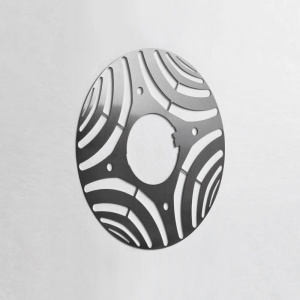电机转子
Motor Rotor: Design, Function, and Applications The motor rotor is a critical component in electric motors, serving as the rotating part that converts electrical energy into mechanical motion. It works in conjunction with the stator (the stationary part) to generate torque, enabling the motor to drive various mechanical systems. Rotors are found in a wide range of motor types, including induction motors, synchronous motors, and brushless DC motors, each with unique design considerations. Design and Construction The rotor’s design varies depending on the motor type. In induction motors, the rotor is typically a squirrel-cage design, consisting of laminated steel cores with conductive bars (usually aluminum or copper) short-circuited by end rings. This simple, robust construction ensures reliability and low maintenance. In synchronous motors, the rotor may feature permanent magnets or wound coils excited by DC current to maintain synchronization with the stator’s magnetic field. Brushless DC motors often use permanent magnet rotors for high efficiency and precise control. Key materials include: - Laminated steel cores – Reduce eddy current losses. - Conductive bars/windings – Facilitate current flow and magnetic field generation. - Permanent magnets (in PM motors) – Provide a strong, consistent magnetic field. Function and Working Principle When an AC or DC supply energizes the stator, it creates a rotating magnetic field. In induction motors, this field induces currents in the rotor (via electromagnetic induction), generating torque. In synchronous and brushless DC motors, the rotor’s magnetic field locks with the stator’s field, ensuring precise speed control. Applications Rotors are essential in: - Industrial machinery (pumps, compressors, conveyors). - Automotive systems (electric vehicles, power steering). - Household appliances (fans, washing machines). - Renewable energy systems (wind turbine generators). Challenges and Innovations Modern rotors face challenges like heat dissipation, mechanical stress, and efficiency optimization. Advances include high-temperature superconductors, advanced cooling techniques, and lightweight composite materials to enhance performance. Conclusion The motor rotor is a fundamental element in electromechanical systems, with its design tailored to specific operational needs. Continuous improvements in materials and manufacturing techniques ensure rotors meet the growing demands for efficiency, durability, and precision in modern applications.
产品
分类:
定转子
-

电机叠片冲压
所属分类: 冲片、散片浏览次数: 7编号:发布时间: 2025-09-30 13:40:17电机叠片冲压:综合指南介绍电机叠片冲压是电机和发电机制造中的关键工序。它涉及生产构成这些设备核心的薄堆叠金属叠片。这些叠片对于减少能量损失、提高效率和确保最佳性能至关重要。本文探讨了电机叠片冲压的关键方面,包括材料、工艺、设计考虑因素和应用。什么是电机叠片冲压?电机叠片冲压是一种精密制造工艺,使用模具和压力机将薄电工钢(也称为硅钢)冲压成特定形状。然后将这些冲压叠片堆叠并粘合以形成电动机或发电机的核心。叠片的主要目的是最大限度地减少交流电流经铁芯时产生的涡流损耗。电机叠片冲压所用材料材料的选择显着影响电机叠片的性能。最常用的材料包括:1.电工钢(硅钢)——由于其高磁导率和低磁芯损耗,这是使用最广泛... -

定子和转子叠片
所属分类: 冲片、散片浏览次数: 5编号:发布时间: 2025-09-30 14:19:56定子和转子叠片:电动机和发电机的关键部件电动机和发电机是现代工业和消费应用的基础,为从家用电器到电动汽车和工业机械的各种设备提供动力。这些设备的核心是两个关键部件:定子和转子。两者通常均采用叠片钢芯(称为定子和转子叠片)构造,在提高效率、减少能量损失和增强性能方面发挥着至关重要的作用。本文探讨了定子和转子叠片的重要性、制造工艺、材料和设计注意事项。1. 定转子叠片介绍定子是电动机或发电机的固定部分,而转子是旋转部件。两者均由堆叠的叠片(薄电工钢片)组成,并且彼此绝缘。这些叠片至关重要,因为它们可以最大限度地减少涡流损耗,涡流损耗是固体导电芯暴露于交变磁场时发生的一种能量耗散。通过使用叠片而不是固... -

电机定转子叠片
所属分类: 定转子浏览次数: 22编号:发布时间: 2025-10-07 08:41:53了解电机定子、转子和叠片:电机的关键部件电动机是现代技术的基础,为从家用电器到工业机械的一切设备提供动力。这些电机的核心是定子、转子和叠片等关键部件,每个部件在将电能转化为机械运动方面都发挥着至关重要的作用。本文探讨了这些元件在运动性能中的设计、功能和重要性。1. 定子:静止的核心定子是电动机的静态部分,通常由圆柱形铁芯组成,该铁芯具有均匀分布的槽以容纳铜绕组。当通电时,这些绕组产生旋转磁场,该磁场与转子相互作用以产生运动。定子结构- 叠片铁芯:定子铁芯由称为叠片的薄绝缘钢板制成。这些叠片减少了涡流引起的能量损失,提高了效率。- 绕组:铜或铝线圈插入定子槽中。这些绕组的布置(例如集中式或分布式)会影...
新闻
分类:
-
[Company News]电机定子与电机转子的主要区别解释
2025-09-30 16:19:08 -
[Industry News]电机转子速度对能源效率的影响
2025-10-07 16:34:38
案例
分类:
暂无搜索结果!
视频
分类:
暂无搜索结果!
下载
分类:
暂无搜索结果!
招聘
分类:
暂无搜索结果!
推荐产品
暂无搜索结果!







 手机:+86 13738592999
手机:+86 13738592999 电话:+86(576) 89307999
电话:+86(576) 89307999 邮箱:sales@zjxinzheng.com
邮箱:sales@zjxinzheng.com 地址:浙江省台州市三门沿海工业城
地址:浙江省台州市三门沿海工业城




 Whatsapp
Whatsapp 电话
电话